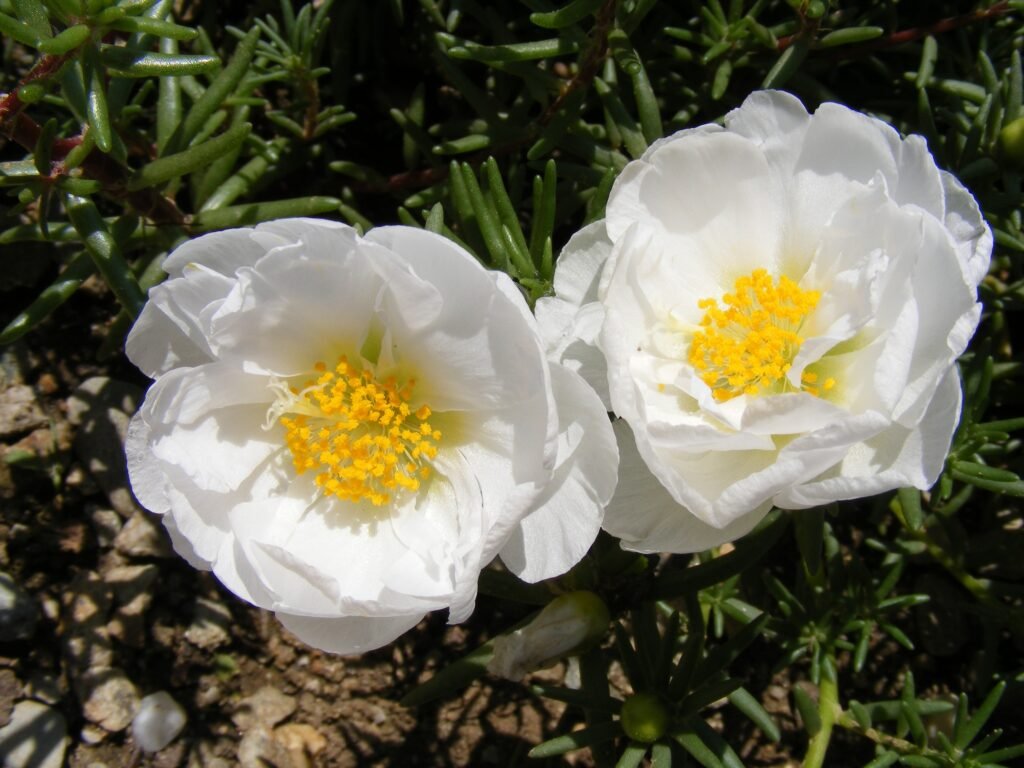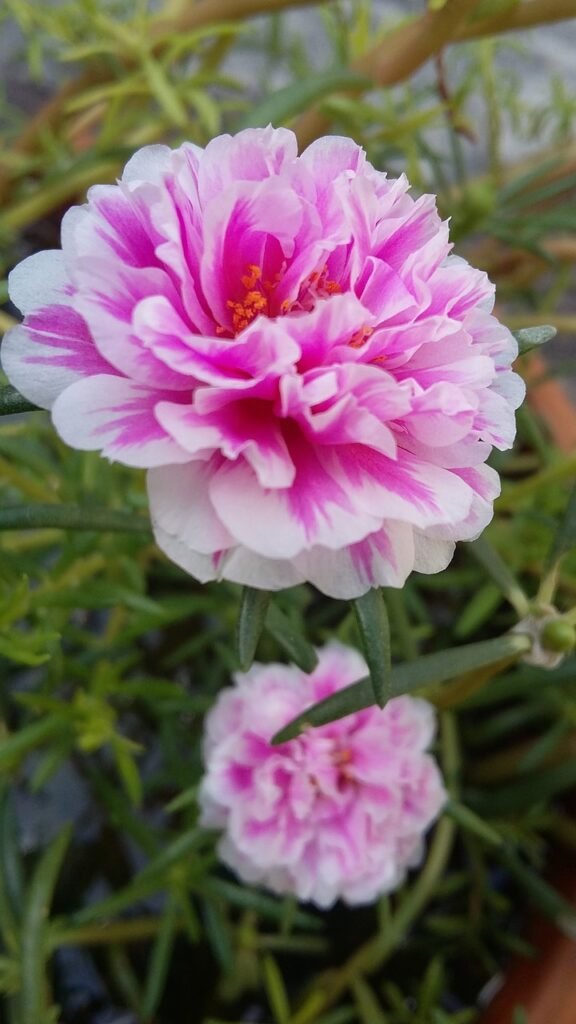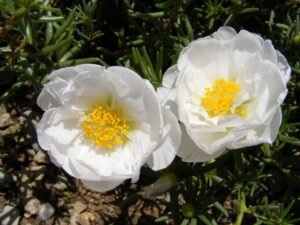How to Grow and Care for Portulaca

Portulaca Grandiflora - Flower Care
Portulaca, commonly referred to as moss rose or sun rose, is a vibrant and resilient flowering plant that has garnered much attention for its ability to thrive in hot, dry conditions. Originating from South America, particularly Brazil and Argentina, portulaca has adapted to a variety of climates, making it a versatile addition to gardens worldwide. This article explains in detail how to grow and care for portulaca.

The Portulaca plant genus is part of the Portulacaceae plant family. There are different varieties of portulaca, each displaying a unique array of colors and growth habits. Some of the most popular varieties include Portulaca grandiflora, known for its big, rose-shaped flowers, and Portulaca oleracea, often considered a succulent due to its thick leaves. These varieties are highly valued for their ability to withstand drought and flourish in sandy or rocky soil.
Facts About Portulaca
Portulaca History
The Portulaca plant, also called Moss Rose or Purslane, has a long history that can be traced back to South America and parts of Africa. The indigenous populations in these areas were among the earliest to recognize the plant’s worth, utilizing it for its healing and cooking advantages. Ancient civilizations documented its usage, emphasizing its significance in traditional practices and daily routines.
The widespread presence of Portulaca around the world can largely be attributed to trade and exploration across different continents. Traveling traders and adventurers introduced the plant to different areas, where it was exposed to various weather conditions and types of soil. Portulaca’s adaptability to various environments has enabled it to flourish in diverse climates, ranging from arid regions to more temperate areas, ultimately expanding its global presence.
Portulaca Plant Facts
Common Names: Moss Rose, Sun Plant, Purslane, Sun Rose, and Mexican rose.
Sunlight: This plant thrives in environments where it can bask in full sun. The term ‘full sun’ is defined as an area that receives at least six to eight hours of direct sunlight per day. These plants are highly responsive to sunlight, often closing their flowers during cloudy weather and at night, and reopening when the sun is out.
Hardiness Zones: This plant is particularly well-suited to USDA Hardiness Zones 10-11, where the climate is warm and largely frost-free.
Spread & Height: On average, Portulaca plants achieve a spread ranging from 6 to 18 inches. This sprawling nature makes them an ideal choice for ground cover, enabling them to fill garden spaces effectively and suppress weed growth. The height of Portulaca is comparatively modest, typically between 3 and 8 inches.
Flowering Time: Typically, Portulaca blooms from late spring to early fall. The precise timing can vary depending on the specific variety and local climate conditions.
Toxicity: The Portulaca plant, while admired for its vibrant flowers and succulent foliage, presents certain toxicity concerns that should not be overlooked. The primary toxic compounds present in Portulaca are oxalates. These compounds, when ingested, can have detrimental effects on both humans and pets. Oxalates can form crystals within the body, potentially leading to gastrointestinal distress and, in severe cases, kidney issues.
How To Propagate Portulaca
The optimal time for propagating portulaca is during the spring and early summer when the plant is actively growing.
Portulaca can be propagated effectively through seeds and cuttings. Understanding the nuances of these techniques can help gardeners cultivate healthy and vibrant portulaca plants in their gardens.
Through Seeds
Propagation through seeds is a straightforward method. Begin by collecting seeds from mature portulaca flowers. Once the flowers have dried and formed seed pods, carefully harvest the seeds. It is best to do this during late summer or early autumn when the seeds are fully mature. Store the collected seeds in a cool, dry place until you are ready to plant.
When ready to sow the seeds, prepare a well-draining soil mix and scatter the seeds on the surface. Lightly press them into the soil but avoid covering them completely, as portulaca seeds require light to germinate. Place the container in a sunny spot and keep soil moist. Germination typically occurs within 10 to 14 days.
Through Cuttings
Propagation through cuttings is another efficient method. To propagate portulaca from cuttings, select healthy, disease-free stems. Using a clean, sharp knife or scissors, cut a 3 to 4-inch section just below a node. Remove any leaves from the lower half of the cutting. Allow the cut end to dry and callous over for a day or two to prevent rotting.
Next, plant the cutting in a pot filled with a well-draining soil mix. After watering the soil, put the pot in a warm, bright area. Keep the soil slightly moist, and roots should begin to develop within two to three weeks. The cuttings can be moved to their permanent spot in the garden once they have developed roots.
How To Plant Portulaca
The successful cultivation of portulaca hinges significantly on meticulous soil preparation. Portulaca thrives best in well-drained, sandy or loamy soil. The ideal soil type should be light and well-aerated to ensure adequate root development and prevent waterlogging, which can be detrimental to portulaca plants.
Amending the soil with organic matter, such as compost or well-rotted manure, can enhance soil fertility and structure. This not only improves nutrient availability but also promotes better water retention in sandy soils. However, it’s crucial to maintain a balance, as overly rich soil can lead to excessive foliage growth at the expense of flowers, which are the primary attraction of portulaca.
The optimal pH level for portulaca ranges between 5.5 and 7.0. Conducting a soil test before planting can help determine the current pH level and any necessary adjustments. If the soil is too acidic, incorporating lime can raise the pH, while sulfur can be used to lower it if the soil is too alkaline.
When it comes to planting portulaca, there are two primary methods: starting from seeds or transplanting seedlings. If starting from seeds, sow them directly into the prepared soil after the last frost date, as portulaca seeds require warm temperatures to germinate. Lightly press the seeds into the soil surface without covering them, as they need light to germinate. Keep the soil consistently moist until germination occurs, typically within 10 to 14 days.
If transplanting seedlings, space them about 6 to 12 inches apart to allow for adequate air circulation and growth. With extreme caution to avoid damaging the fragile roots, carefully remove the seedlings from their containers. Plant them at the same depth they were growing in their original pots and water immediately to help settle the soil around the roots.
By ensuring proper soil preparation and following precise planting techniques, you can enjoy a vibrant and healthy portulaca display throughout the growing season.
How To Care For Portulaca
Sunlight
When it comes to cultivating portulaca, selecting the appropriate location is paramount for its successful growth. Portulaca thrives in environments that provide full sun exposure. Ensuring that the plant receives at least six to eight hours of direct sunlight daily is crucial for its vigorous flowering and overall health. The vibrant blooms of portulaca are most prolific under ample sunlight, making sunny spots in your garden the ideal choice.
Soil
Equally important is the soil condition. Portulaca requires well-draining soil to prevent waterlogging, which can lead to root rot and other detrimental conditions. Sandy or rocky soils are particularly suitable for portulaca, as they facilitate excellent drainage and prevent excess moisture retention. If your garden soil is heavy or clay-like, amending it with sand or gravel can significantly enhance its drainage capabilities, creating a more hospitable environment for the plant.
For those interested in container gardening, portulaca is an excellent candidate. When growing portulaca in pots or containers, it is essential to use a well-draining potting mix. A combination of standard potting soil with added perlite or coarse sand can provide the necessary drainage. Ensure that the containers have drainage holes to allow excess water to escape, preventing water accumulation at the roots.
Watering
Portulaca grandiflora is a succulent renowned for its drought tolerance. This plant has evolved to survive in semi-arid and desert conditions. The key to its resilience lies in its fleshy leaves and stems, which are adept at storing water. This unique adaptation allows the plant to endure extended periods without water, making it an excellent choice for gardeners seeking low-maintenance flora.
First and foremost, even though portulaca thrives in dry conditions, it still requires regular watering, particularly during its initial growth stages. It’s best to water portulaca deeply but infrequently. Allow the top inch of soil to dry out between waterings to prevent root rot, which can occur in overly moist conditions. This deep watering method ensures that the roots grow deeper into the soil, promoting a more robust plant structure.
During the peak growing season, typically in the warmer months, aim to water portulaca once or twice a week, depending on local climate conditions. In extremely hot weather, you might need to increase the frequency slightly, but always ensure the soil has dried out before the next watering session. A drip irrigation system can be an efficient method to deliver consistent moisture without overwatering.
Fertilizing
When it comes to fertilizing portulaca, moderation is key. A balanced, slow-release fertilizer applied at the beginning of the growing season is usually sufficient. Opt for a formula with equal parts nitrogen, phosphorus, and potassium (such as a NPK 10-10-10 mix). Alternatively, a low-nitrogen option specifically designed for flowering plants can also be effective. Refrain from fertilizing more than once a month, as excessive nutrients can harm the plant.
Additionally, organic options like compost or well-decomposed manure can be beneficial. These not only provide essential nutrients but also improve soil structure and drainage, further supporting the growth of your portulaca plants. Remember, less is often more when it comes to both watering and fertilizing portulaca, ensuring a balanced approach leads to a flourishing garden.
Pests and Diseases
Portulaca, often celebrated for its resilience and vibrant blooms, is not entirely immune to pests and diseases. Proper management of these issues is essential to ensure the plant’s health and longevity. One of the common pests that affect portulaca is aphids. These tiny insects feed on the plant’s sap, causing leaves to curl and yellow. To combat aphids, regular inspection of the plant is crucial. If detected, aphids can be controlled using a mild insecticidal soap or neem oil, applied directly to the affected areas.
Another frequent issue is root rot, usually resulting from overwatering or poor soil drainage. Portulaca plants thrive in well-drained soil and are particularly susceptible to waterlogged conditions. To prevent root rot, ensure that the soil has good drainage and avoid excessive watering. If root rot is suspected, it may be necessary to remove the affected plant parts and replant in fresh, well-draining soil.
Fungal infections can also pose a threat to portulaca. Powdery mildew, a common fungal disease, appears as a white, powdery substance on leaves and stems. To prevent and treat fungal infections, maintain adequate air circulation around the plants and avoid overhead watering. Fungicides can be applied as a preventive measure or to treat existing infections.
In addition to these specific issues, general plant health can be bolstered through proper portulaca plant care. This includes ensuring the plant receives sufficient sunlight, as portulaca thrives in full sun, and maintaining a balanced fertilization regimen. Regularly removing dead or diseased plant material can also help in preventing the spread of pests and diseases.
Pruning and Maintenance
Regular pruning and maintenance play a vital role in sustaining the beauty and health of the portulaca plant. Proper pruning not only encourages a bushier growth habit but also extends the blooming period by removing spent flowers. To maintain an aesthetic and healthy portulaca, it is essential to follow some key practices.
Pruning should ideally be performed at the beginning of the growing season, just as new growth starts to appear. This helps in removing any dead or damaged stems from the previous season, allowing the plant to focus its energy on producing fresh, vibrant foliage. As the portulaca grows, periodic trimming of the tips will promote a denser and more compact plant structure, preventing it from becoming leggy.
Deadheading, or the removal of spent blooms, is another important aspect of portulaca plant care. By regularly snipping off faded flowers, you can encourage the plant to produce more blooms, ensuring a continuous display of color throughout the growing season. This process also helps in preventing the plant from self-seeding excessively, which can lead to unwanted spread.
Winter Care
Seasonal care is crucial for preparing portulaca for different weather conditions. In colder climates, portulaca is often treated as an annual, but in warmer regions, it can be overwintered. Before the first frost, consider bringing container-grown portulaca indoors or providing a protective mulch layer for in-ground plants. Reducing watering frequency and trimming back the plant will help it survive the dormant season.
Creative Uses and Design Ideas
Portulaca’s vibrant flowers and low-growing habit make it an exceptional choice for various landscaping applications. Its resilience and colorful blooms can transform any garden space into a vivid spectacle. One popular use of portulaca is as a ground cover. Its spreading nature allows it to fill in gaps between other plants, creating a lush, carpet-like effect that not only beautifies the garden but also helps suppress weeds. For those seeking a vibrant, low-maintenance option for large areas, portulaca is an ideal solution.
Rock gardens are another excellent setting for portulaca. The plant’s drought tolerance and preference for well-drained soil make it a perfect match for rocky terrains. Its ability to thrive in full sunlight ensures that rock gardens remain lively and colorful throughout the growing season. Pairing portulaca with other succulents or drought-resistant plants can create a visually appealing and sustainable landscape design.
Hanging baskets and containers also benefit greatly from the inclusion of portulaca. Its trailing habit allows it to spill gracefully over the edges, providing a cascade of color that can brighten up patios, balconies, and other outdoor spaces. When planting portulaca in containers, it’s important to use a well-draining potting mix to ensure the plant’s health and longevity. Regular watering, while ensuring the soil remains well-drained, will keep portulaca thriving in these environments.
Companion planting with portulaca can enhance both the aesthetics and health of the garden. Pairing portulaca with taller plants, such as marigolds or zinnias, can create a layered look that is visually dynamic. Additionally, portulaca’s ability to attract pollinators can benefit nearby flowering plants, promoting a more vibrant and productive garden. By strategically placing portulaca alongside other plants, gardeners can achieve a harmonious and flourishing landscape.
Incorporating portulaca into various garden settings not only enhances visual appeal but also contributes to the overall health and sustainability of the garden. Whether used as ground cover, in rock gardens, hanging baskets, or as a companion plant, portulaca offers endless possibilities for creative and effective garden design.





